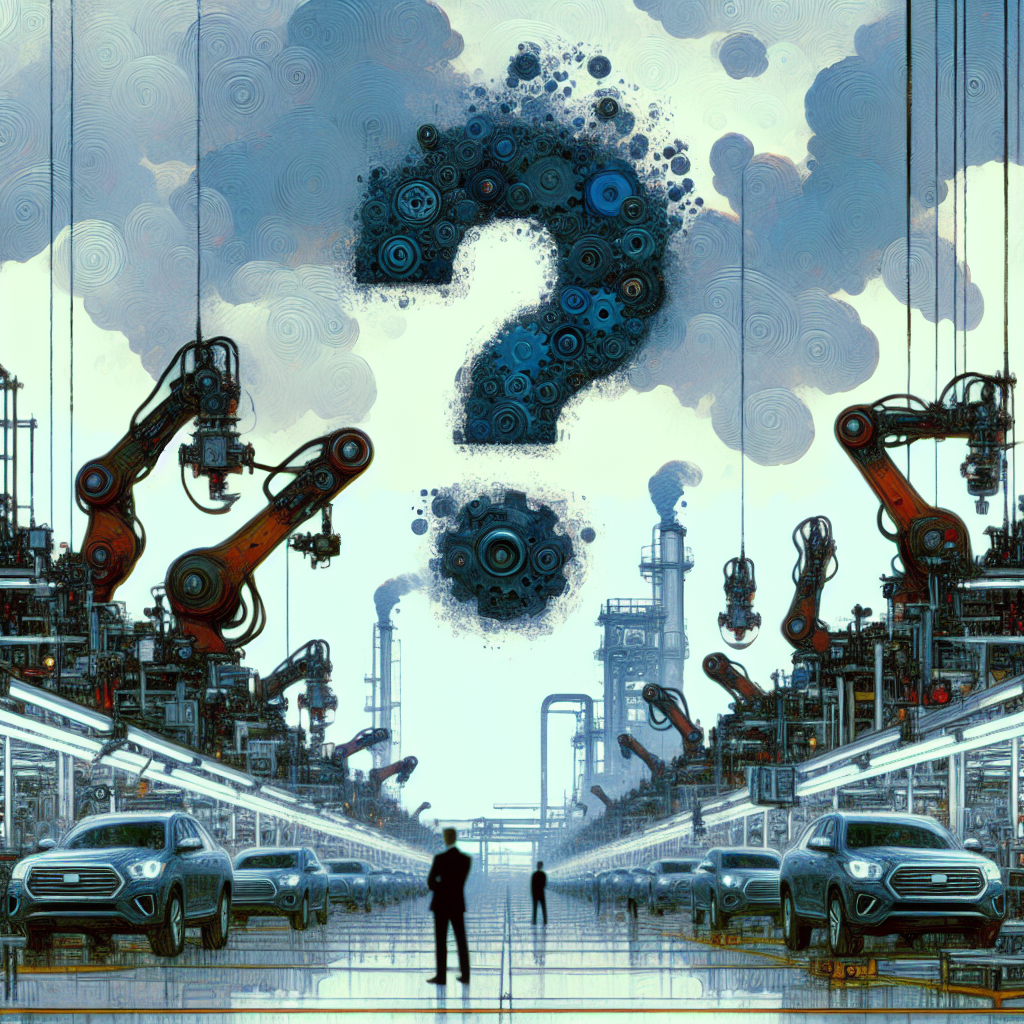Trump’s Potential Return Sparks Uncertainty in Auto Industry: BofA Insights
The possibility of Donald Trump’s return to the political scene has once again stirred waves of speculation and concern across various sectors of the economy. One industry, in particular, that seems to be gripped by a sense of uncertainty is the automotive industry. According to insights from Bank of America (BofA), Trump’s potential presidential campaign and possible re-election in 2024 could bring about ripple effects that may affect automakers globally.
Understanding the Trump Effect: A Recap
During his tenure from 2016 to 2020, President Trump’s policies had a significant impact on the automotive industry. From changes in tariff regulations to the renegotiation of the North American Free Trade Agreement (NAFTA) into the United States-Mexico-Canada Agreement (USMCA), automakers found themselves having to adapt quickly to a shifting landscape. The prospect of such a dynamic and unpredictable economic environment returning is cause for attention among industry players.
Tariff Tremors
One of the most profound disruptions was the imposition of tariffs on steel and aluminum imports. Automakers depend heavily on these materials, and the additional costs translated into increased prices for consumers and reduced profit margins for the companies. The significant considerations here include:
- Cost Pressures: Tariffs drove up material costs, affecting the overall pricing strategy for manufacturers.
- Global Supply Chain Disruptions: Companies had to navigate through complexities in their import routines to manage supply chains efficiently.
Repeating History?
With Trump’s re-entry into politics, there are concerns that similar trade policies might be reintroduced. BofA analysts suggest that firms must prepare for potential volatility in trade and regulatory stances. Anticipating such shifts could determine how smoothly they navigate potential changes.
Impact on Auto Regulations
Trump’s administration had a reputation for rolling back regulations, particularly those related to environmental standards. Automakers witnessed a retreat from stringent emissions and fuel economy standards, allowing for more leniency in production practices. While this presented short-term relief for manufacturers, in the long term, it left room for considerable sectoral division and disarray. If Trump’s influence returns, we may see:
- Healthier Debate on Emissions Standards: A balance between strict environmental policies and the economic interests of automakers could arise, which can be challenging yet critical.
- Divergence Between Federal and State Policies: States like California might continue to uphold stricter policies which could lead to inconsistencies across the board.
Evolution of Trade Dynamics
International trade dynamics underwent significant changes during Trump’s tenure. The restructuring of trade agreements such as NAFTA affected the auto industry’s operations not just within the United States but also in neighboring countries.
Trade Strategies on the Horizon
As global economies remain interconnected, the automotive industry must consider devising strategic responses in light of possible changes to trade treaties and international relations. Key areas of focus include:
- Investment Diversification: Automakers may look into broadening their markets and supply chains to mitigate risks associated with heavy dependence on any single country.
- Reevaluation of Manufacturing Bases: Businesses might need to reconsider their manufacturing and operational bases to adapt to changes in international policy.
Shifts in Consumer Preferences and Electric Vehicles (EVs)
The conversation around climate change and energy efficiency continues to push the automotive industry toward electric vehicles (EVs). Although Trump’s previous administration’s stance was not entirely focused on green technology, the market dynamics have evolved to present EVs as the future direction for many manufacturers.
- Technological Innovation: Companies may need to accelerate investments in research and development to stay competitive in a rapidly developing EV landscape.
- Infrastructure Development: The industry could advocate for stronger governmental support in establishing sustainable infrastructure for EVs.
Path Forward for the Auto Industry
Regardless of political developments, the global push towards EVs is likely to continue, driven by innovation and consumer demand. The auto sector faces added pressure to deliver sustainable and efficient vehicles, demanding a concerted effort in adjusting to both domestic and international pressures.
Conclusion: Adapting to Uncertainty
The possible resurgence of Trump’s political influence presents an undeniable element of uncertainty for the automotive sector. However, it also offers an opportunity for the industry to proactively plan and adapt to potential changes in regulations, trade policy, consumer preferences, and technological advancements. Successfully navigating this dynamic environment will depend largely on the ability of auto companies to remain agile, informed, and innovative.
Embracing upcoming challenges and converting them into opportunities can set the stage for a resilient and sustainable future for the automotive industry amidst any geopolitical or market shifts that may arise.




